The hack squat machine is one of the most popular leg exercises around. A regular dose of this well-known exercise can help you build strength and add size to your entire lower body, especially your quads. Unlike regular barbell squats, hack squats are easy on your lower back, and for a lot of lifters, that’s a very welcome benefit.
But, if you become over-reliant on hack squats in your workouts, they can soon start to become less effective. Your muscles will get used to the exercise, and they’ll stop responding to it. Gradually, and despite your best efforts, your progress will stall, and you’ll find yourself stuck in a progress rut, unable to increase muscle size or strength.
The good news is that there are plenty of other exercises you can do in place of hack squats to ensure your lower body workouts stay fresh and productive.
Hack Squat 101
Before we reveal the best hack squat alternative exercises, let’s examine this exercise and discuss what makes it so popular and effective.

Simple to perform– the hack squat machine is something of an exercise no-brainer. The rods guide your movement, so you’re free to focus on pushing with your legs. You don’t need to worry about things like balance or coordination. Instead, you can concentrate on working your legs to the max.
That doesn’t mean you can forget entirely about proper exercise technique, but, with hack squats, there really isn’t too much to think about, and it’s pretty tough to do this exercise incorrectly.
Level Up Your Fitness: Join our 💪 strong community in Fitness Volt Newsletter. Get daily inspiration, expert-backed workouts, nutrition tips, the latest in strength sports, and the support you need to reach your goals. Subscribe for free!
Very safe– if you fail while doing barbell front or back squats, there is a very real risk of getting crushed under a heavy weight. Needless to say, this could cause serious injury. Powerlifters call this getting stapled by the weight. Because of this, if you’re squatting heavy, you should do it in a power rack.
Hack squats machines are much safer because they have safety catches you can lock in place to stop weight descending if you cannot complete a rep. This means you can train to failure in relative safety and without needing spotters.
Increased back support – hack squat machines provide lots of back support. That’s good news if you have a weak back, an old back injury, or just want to train your legs without having to worry about a tired lower back bringing your set to a premature end. You’ll still need to use your core to support your spine during this exercise, but the backboard will do most of the work for you.
Quick and easy to learn– because the weight is guided on rods, and your back is supported, hack squats are quick and easy to learn. This makes it the ideal leg exercise for beginners. Most free weight lower body exercises, like squats and deadlifts, are much more technically demanding and take longer to learn and master. Hack squats provide instant exercise gratification.
Emphasize different leg muscles by moving your feet– hack squat work your entire lower body. Still, it’s possible to emphasize different muscles by moving your feet and changing the angle of the footrest.
Moving your feet forward and using a flatter footrest angle is an excellent way to emphasize your glutes and hamstrings. In contrast, moving your feet back and using a steeper footrest angle hits your quads more, as does a narrower stance.
However, it’s also important to know that extreme positions can put a lot of stress on your joints. For example, if your feet are close together and near the bottom of the footplate, your knees will probably track forward and beyond your toes, which can be very hard on your knee joints, even though it’s an effective way to work your quads.
Good for drop sets– if you want to push your legs to the limit, training systems like drop sets can help. With drop sets, you do as many reps as you can with your chosen weight, strip 10-15% off, and rep out again. This type of workout intensifier is not practical with barbell squats.
There is no denying that the hack squat provides your legs with a great workout, but there are bound to be times when you don’t have access to this machine or need a hack squat alternative to add some variety to your workouts.
Here are 10 hack squat alternatives.
Top Hack Squat Alternative Exercises
The following exercises work the same muscles as hack squats but in a different way. Some use slightly different movement patterns, while others use different training equipment. Use any of these exercises anytime you don’t have access to a hack squat machine or just need a hack squat alternative.
1. Barbell hack squats
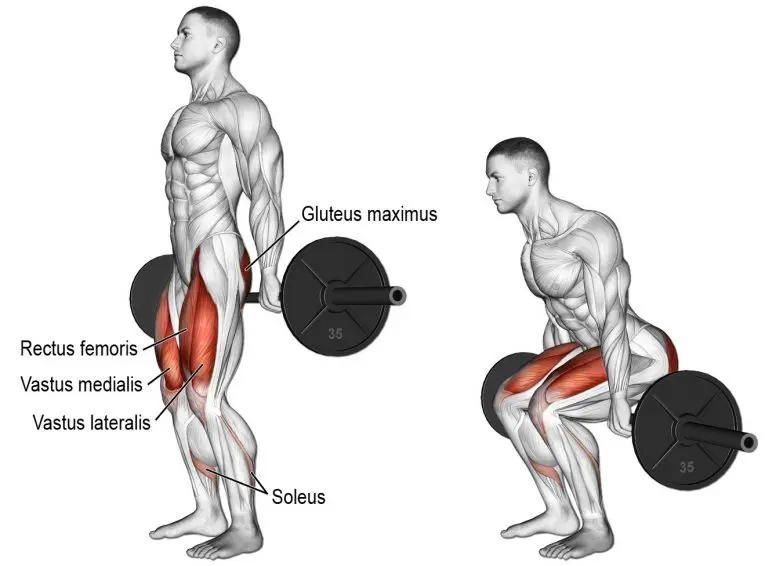
Before the hack squat machine became popular, this is how people did hack squats. This exercise is named after Estonian weightlifter and wrestler George Hackenschmidt, famed for his huge thighs and immense strength (1).

Traditionally, barbell hack squats are done with elevated heels, which increases quad activation. However, some exercisers may find this puts too much stress on the knees. If you DO raise your heels, start with a small block to see how your knees feel, not just during the exercise but afterward, too.
Make this exercise as safe as possible by keeping your lower back arched, and your core braced. Unlike machine hack squats, this exercise can be hard on your lower back.
Learn more about barbell hack squat.
2. Sissy squats
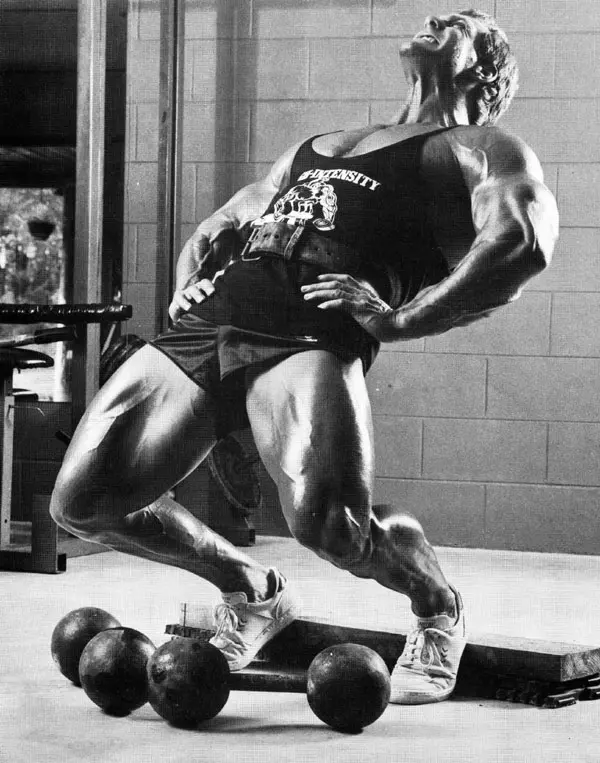
If you work out at home, you are probably wondering how you can train your quads even though you are limited to bodyweight exercises. Sissy squats may be the answer!
This old-school bodybuilding exercise is a very useful quad builder, and your bodyweight alone should provide more than enough resistance for most lifters. That said, if you are strong enough, you can also do it with some added weight to make it even more challenging.
Be warned, sissy squats can be hard on your knees, so proceed with caution, especially if you have a history of knee pain or injuries.
Learn more about weighted sissy squat.
3. Smith machine squats
Like the hack squat machine, the Smith machine guides the weight on rods, so you don’t have to worry about balancing the load. Smith machine squats don’t provide any back support, but they do allow you to keep your torso upright, which takes a lot of stress off your lumbar spine.
Make this exercise more like hack squats by using a hip-width stance, keeping your feet under your hips, and raising your heels on blocks or weight plates.
4. Barbell back squats
Level Up Your Fitness: Join our 💪 strong community in Fitness Volt Newsletter. Get daily inspiration, expert-backed workouts, nutrition tips, the latest in strength sports, and the support you need to reach your goals. Subscribe for free!
A lot of fitness coaches call barbell back squats the king of exercises. That’s because, as well as working your lower body, they also involve many upper body muscles. Entire workouts have been created around barbell back squats, including the famous 20-rep squat routine.
The main drawbacks of barbell squats are that they’re hard to learn, can be tough on your lower back, and dangerous when performed with very heavy weights.
That said, done with light to moderate weights for moderate to high reps, this is a good hack squat alternative that will challenge your quads, hamstrings, and glutes. Adopt a shoulder-to-hip-width stance to more closely replicate hack squats.
Learn more about barbell back squat.
5. Front Squats

In some ways, front squats are a better hack squat alternative than back squats. Why? Because they allow you to keep your torso more upright, which makes them more quad-centric. Also, front squats are typically done with a narrower stance, just like hack squats.
On the downside, front squats can be hard to master because resting and holding a heavy barbell on the front of your shoulders is not easy. But, with practice, this gets easier, and you’ll soon discover how good a quad exercise that front squats can be. Raise your heels to increase quads activation, but take care not to over-stress your knees.
Learn more about front squat.
6. Goblet squats
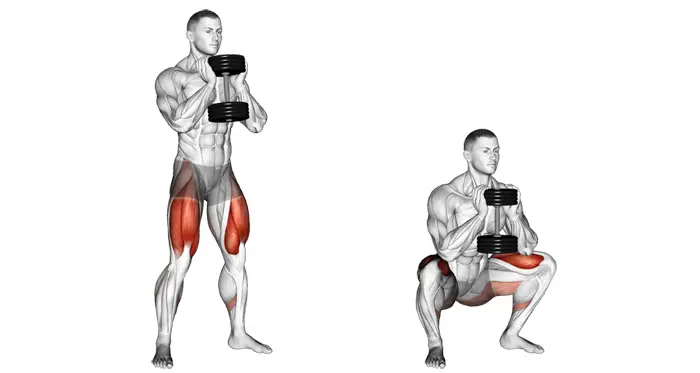
Goblet squats are similar to front squats but much easier to learn. They allow you to keep your torso upright, which makes them very quad-centric, just like hack squats. Using just a single kettlebell or dumbbell, goblet squats are ideal for home exercisers, as well as those who work out in a gym. They’re a very viable alternative to hack squats.
How to do it:
- Hold a dumbbell or kettlebell in front of your chest and just beneath your chin. Step out and into a shoulder-width stance, with your toes turned slightly outward. Brace your abs.
- Bend your legs and squat down until your thighs are roughly parallel to the floor. Keep your lower back slightly arched; no rounding!
- Stand back up and repeat.
- Use a wider stance to increase adductor recruitment or a narrower stance to hit your quads more.
Learn more about goblet squats guide.
7. Leg presses
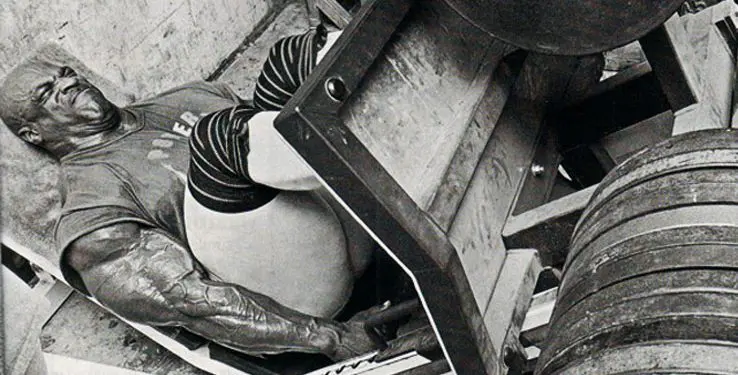
Leg presses are similar to hack squats in several ways. Like hack squats, the weight is guided on rods, and your back is also supported. However, the movement is reversed in that, with hack squats, your feet stay stationary, and you lift and lower your body, while in leg presses, your body remains stationary, and your feet move up and down.
These differences aside, the leg press is still a good hack squat alternative, especially when done using a hip-width stance with your feet low on the footplate.
Learn more about leg press.
8. Wall squats
Wall squats are a good bodyweight-only hack squat alternative that’s ideal for home use. It’s also a good finisher for use at the end of a gym-based leg workout. Unlike most leg exercises, wall squats involve no movement, and that makes them an isometric exercise.
Despite this, they’re still a demanding leg exercise, and the harder and longer you push your back against the wall, the more effective they’ll be.
How to do it:
- Stand with your back against a smooth, sturdy wall. Move your feet forward about 18-24 inches.
- Bend your legs and slide your back down the wall until your thighs are parallel to the floor.
- Push your back against the wall as hard as you can and for as long as you can. Keep your hands away from your legs – do not use them for help.
- Make this exercise even harder by holding dumbbells in your hands.
9. Squat jumps
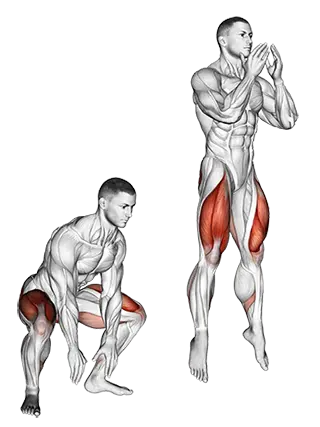
Hack squats can build muscle size and strength, but, performed explosively, they’re also useful for developing muscle power. Muscle power is your ability to generate force quickly and is an essential element in most sports.
You can do squat jumps without or with weights, but for most exercisers, the unweighted version adequate and easier on your joints too. Try doing 8-12 jump squats immediately after a weighted leg exercise to really pump up your quads.
Learn more about jump squat.
10. Hip belt squats
One of the reasons exercisers love hack squats is that they’re easier on your lower back than most free weight squat exercises. Hip belt squats are also very lower back-friendly, which is what makes them such a good hack squat alternative. The weight is supported on your hips and not on your shoulders, which means significantly less spinal compression (2).
How to do it:
- Hang a weight from your hips using a chin-dip belt. Depending on the length of the suspension chain and how deep you squat, you may need to stand on platforms, so the weight doesn’t touch the floor at the bottom of each rep.
- Stand with your feet between hip and shoulder-width apart, toes turned slightly outward.
- Push your butt back, bend your knees, and squat down until your thighs are roughly parallel to the floor. Make sure you keep your weight on your heels and to your best not to round your lower back.
- Stand back up and repeat.
More Squat Alternative Exercises:
- Front Squat Alternatives for Mass, Strength
- Smith Machine Squat Alternatives for Powerful, Muscular Legs
- Bulgarian Split Squat Alternatives for Stronger, More Athletic Legs
- Home Squat Alternatives for Strong, Sculpted Legs
Wrapping up
Hack squats are an effective way to work your legs in relative safety. The weight is guided so you can focus 100% on training your quads, hamstrings, and glutes, without having to worry too much about your lower back or dropping the weight.
But, as good as hack squats are, they’re not always practical. Some gyms don’t have this particular machine, and if you train at home, you probably won’t have space for one. Plus, if you do this exercise too often, your muscles will become accustomed to it, and it will stop being so effective.
With ten hack squat alternatives to choose from, you now have lots of exercises you can do instead. So, whether you are bored with hack squats or just don’t have access to this machine, you can still train your legs in more or less the same way.
References:
1 – Encyclopedia Britannica: George Hackenschmidt https://www.britannica.com/biography/George-Hackenschmidt
2 – PubMed:Activity of Trunk and Lower Extremity Musculature: Comparison Between Parallel Back Squats and Belt Squats https://www.ncbi.nlm.nih.gov/pmc/articles/PMC7126258/









